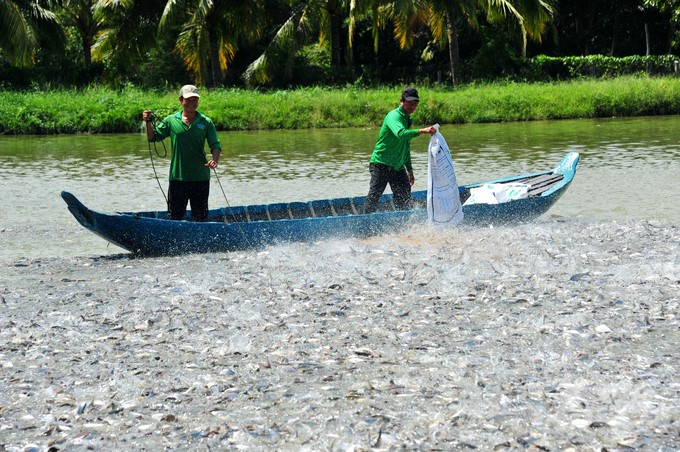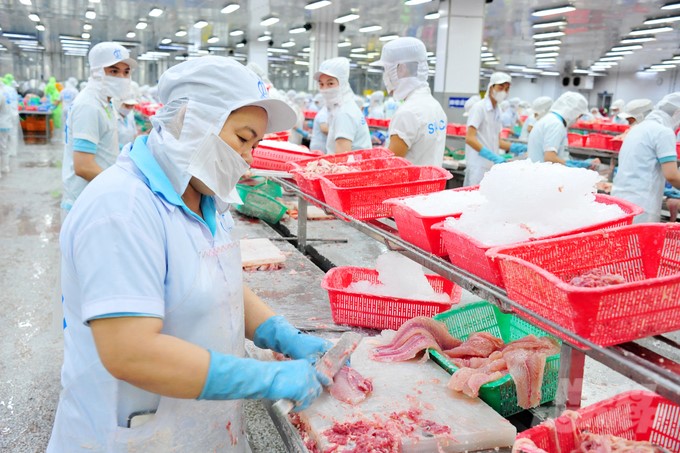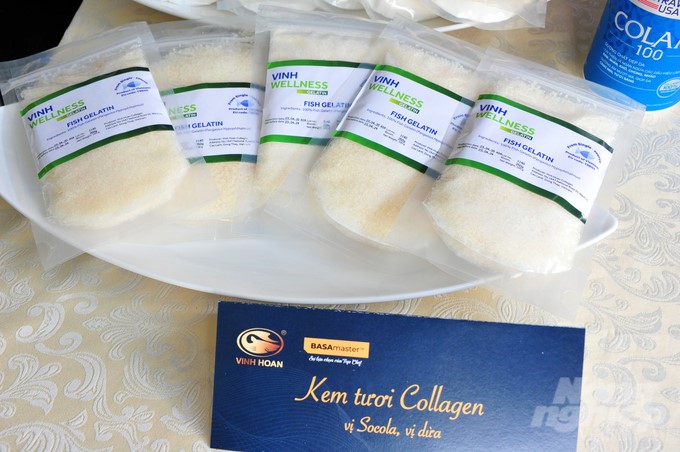(VAN) Utilizing by-products from pangasius not only contributes to enhancing the product’s value but also brings great environmental and economic benefits.

In the first 9 months of 2024, the pangasius farming area in the whole Dong Thap province is about 2,300 hectares, with an annual output of more than 500,000 tons. Photo: Le Hoang Vu.
Dong Thap is one of Vietnam’s key provinces in the pangasius farming and processing industry. According to a report from the Dong Thap Department of Agriculture and Rural Development, in the first 9 months of 2024, the pangasius farming area in the whole province is about 2,300 hectares, with an annual output of more than 500,000 tons. In particular, Dong Thap pangasius not only serves the domestic market but is also exported to many countries around the world.
Pangasius processing and export activities have improved significantly, and the quality management of exported goods has become increasingly strict. In Dong Thap province, there are 22 enterprises processing pangasius for export. Leading enterprises that make a mark for Dong Thap’s pangasius industry include Vinh Hoan JSC, Hung Ca Co. Ltd., Hoang Long Seafood Processing Co. Ltd., IDI International Investment and Development Corporation, and Truong Giang Fishery Holdings Corporation. Most pangasius processing and exporting enterprises apply international food hygiene and safety and quality management programs such as HACCP, BRC, Global GAP, IFS, ASC, and BAP. Most certificates serve exports to 134 countries, including key markets such as China, US, ASEAN, EU, UK, Mexico, Brazil, Colombia, etc.
Diverse export markets are an opportunity for Dong Thap pangasius to reach far and affirm its quality. Not only producing the traditional product of pangasius fillet, but enterprises in Dong Thap are increasingly focusing on creating many high-quality, value-added products from pangasius, such as collagen extract, genlatin, Ranee fish oil, dried pangasius skin, etc.
During the processing of pangasius, up to 60–70% of the fish’s weight is discarded as by-products such as head, bones, skin, fat, and internal organs. If not handled properly, this amount of by-products will become a major environmental burden due to waste treatment costs. However, these by-products contain many valuable nutrients, which can be utilized to produce high-value products.

Processing pangasius for export in Dong Thap. Photo: Le Hoang Vu.
Enterprises in Dong Thap are also aware of the potential of by-product processing. Mr. Ong Hang Van, Deputy General Director of Truong Giang Fishery Holdings Corporation, said: “Previously, we only focused on exporting pangasius fillets, but with the development of modern processing technology, we now can utilize almost the entire fish to produce many different products. This not only increases revenue but also helps us reduce waste treatment costs.”
Taking the lead in the field of producing collagen and gelatin from pangasius skin is Vinh Hoan JSC, a leading enterprise in processing and exporting seafood in Dong Thap province.
Producing collagen and gelatin from fish skin helps Vinh Hoan companies optimize costs and profits when utilizing by-products in the process of producing the core product, pangasius fillet. Accordingly, instead of being discarded, fish skin is used as an input raw material to produce collagen and gelatin. This is also the “Zero Waste” strategy that Vinh Hoan and many other food processing companies are pursuing.
Exploiting other values from by-products, pangasius fat, Asia Fish Oil JSC in Lap Vo district, Dong Thap province (part of Sao Mai An Giang Group) has successfully refined the fish oil product with the brand name “Ranee.”This is 100% nutritious cooking oil from fish, containing all the essential nutrients for the body and bringing many health benefits.
The company’s production capacity reaches 400 tons of raw materials/day. Accordingly, raw fish fat is extracted from fish farmed according to a closed process with strict quality control from food to harvest, processing, and export. The farming pond meets ASC (Aquaculture Stewardship Council) standards.

Products processed from pangasius by-products of Vinh Hoan JSC contribute to improving the value of Dong Thap’s pangasius industry. Photo: Le Hoang Vu.
In addition to by-products (skin, fat) used to create valuable and high-quality products to serve the needs of nutrition, health, and beauty, other by-products of this processing industry are also used to produce organic fertilizer for agricultural production (fruit trees, crops), animal feed, and fish meal, and compost as food for black soldier fly larvae.
According to Mr. Tran Dinh Luan, Director of the Department of Fisheries (Ministry of Agriculture and Rural Development), fishery by-products are a source of raw materials that bring added value to the industry when utilized effectively. To achieve this, enterprises need to invest in technology, improve economic efficiency in processing value-added products, and utilize the Government’s policies to encourage development in this field, specifically policies to support enterprises in investing in by-products, to move towards a circular economy in the fisheries industry.
Agriculture News | Agri Products Price



